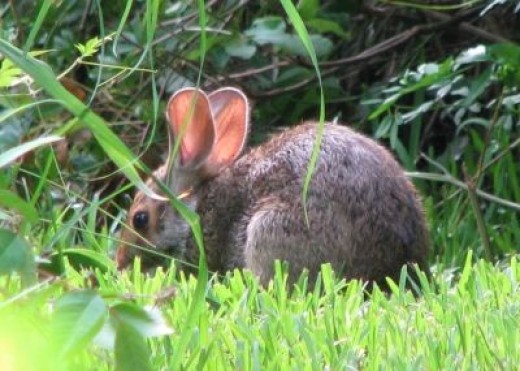

A typical colony consists of six to ten adults of both sexes. If soil conditions and forage supply permit, they prefer to live in groups in large, complex burrow systems (warrens). ( Macdonald, 1984 Nowak, 1999)Įuropean rabbits are gregarious, territorial animals. However, mortality during the first year of life in wild populations is generally quite high, and can reach as much as 90%. ( Macdonald, 1984 Nowak, 1999)ĭomestic rabbits can live to be up to nine years old. Males are not involved in caring for young. Average age at sexual or reproductive maturity (male) 8 monthsįemales provide maternal care to their altricial young.Average age at sexual or reproductive maturity (female).Average age at sexual or reproductive maturity (female) 8 months.Breeding season These animals breed throughout the year, although most breeding takes place in the first half of the year.Breeding interval Breeding may occur approximately monthly.gonochoric/gonochoristic/dioecious (sexes separate).However, mortality rates in the first year of life frequently exceed 90%. Young are weaned at four weeks of age, attain sexual maturity at about eight months, and can live up to nine years old. The mother visits the nest for only a few minutes each day to nurse them, but the milk is extremely rich. Neonates, called kittens, are naked, blind and helpless. Thus, they are useful models for the study of human pregnancy and fetal development. (Macdonald, 1984) Rabbit placentae allow an unusually high degree of contact between maternal and fetal bloodstreams, a condition they share with humans. One reason for the reproductive success of rabbits is induced ovulation, where eggs are only released in response to copulation. Females experience postpartum estrus and thus may have several litters per year, though spontaneous abortions and resorption of embryos are common (possibly due to environmental or social stresses). Gestation is about 30 days, and the average litter contains 5 to 6 young. Oryctolagus cuniculus is capable of reproducing year-round, but most breeding activity takes place in the first half of the year. Rabbits are well-known for their reproductive capacity. Mating in rabbits is generally polygynandrous, though males will attempt to monopolize particular females. Average basal metabolic rate 7.395 W AnAge.cuniculus vary tremendously in size, fur type, coloration, and general appearance.

Oryctolagus cuniculus is the ancestor of all domestic rabbits (about 80 varieties!). This species (and rabbit species generally) have smaller ears and shorter, less powerful legs than their hares.

The underside of the body is paler gray, and the underside of the tail is white. The coat is generally grayish, with black and brown (and sometimes red) sprinkled throughout. cuniculus weigh between 1.5 and 2.5 kg, and are from 38 to 50 cm long. Human activities, particularly the spread of agriculture, have often inadvertently helped this species to colonize new areas. cuniculus has learned to coexist with humans in cities, making its home in parks and cemeteries as well as gardens and lawns. Cultivated land was once well-suited, but this is no longer the case due to modern plowing techniques which destroy rabbit burrows. Brushy fields are preferred for the cover they provide, but forests are also inhabited. The preferred habitats of this species include dry areas near sea level with soft, sandy soil (for easy burrowing). The last Ice Age confined the species to the Iberian peninsula and small areas of France and northwest Africa, but due to human action and adaptability of this species, European rabbits today exist in the wild on every continent except Asia and Antarctica. Oryctolagus cuniculus, also called a European, an Old World, or a domestic rabbit, is the only species in its genus.


 0 kommentar(er)
0 kommentar(er)
